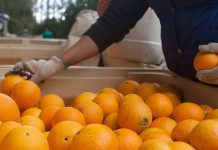The carryover maize supply is estimated at 125 million tons – 27 million less than the nearly 152 million tons for the 2009/10 season. Agricultural Business Chamber CEO Dr John Purchase said, “This decrease can mainly be ascribed to a lower-than-expected American harvest.
This has pushed the international prices up during the last quarter of 2010 and will in all likelihood lead to increased hectares planted to maize in the southern hemisphere. ”The global carryover supply for wheat is estimated at 181 million tons – 14 million less than the 2009/10 season. Nevertheless, this is still considerably more than the 121 million tons in 2007/08, said Dr Purchase, adding that it’s possible that both wheat and maize prices could show upward movement should the US dollar weaken, as expected.
Market development
International maize markets will be affected should the US decide to lift ethanol import tariffs, said Suidwes CEO Schalk Pienaar. “The American ethanol industry will then be placed under pressure because of cheaper ethanol from South America. “Another variable is China’s 4,4% inflation rate. If the Chinese Central Bank decides to combat inflation with a proactive fiscal policy and increase interest rates, it could put pressure on commodity markets.”
Pienaar added that possible maize exports from Argentina to China would also affect American prices. The current Argentinean maize harvest stands at some 26 million tons, with 18,5 million earmarked for exports. Meanwhile, Dr Purchase said the broader maize industry is facing a lack of market development to absorb its surplus production in South Africa.
“Market development requires a strong public-private partnership approach. Given the level of distrust between the commercial sector and government, very little has been done in this regard,” he explained. “However, the recent establishment of a ministerial committee by the National Agricultural Marketing Council to investigate the challenges confronting the broader maize and grain industry is a positive step.”
According to Pienaar, market development has been undermined by the banning of the use of maize as feedstock for biofuels, uncompetitive transport and port pricing, and the fact that genetically modified maize isn’t suitable for export to Africa. Government made R65 million available for the upgrading of the East London harbour, but that means it will be out of operation for at least a year,” said Pienaar. “All of this should be addressed as a matter of urgency. A major problem facing the local maize industry is the lack of local infrastructure, making exports virtually impossible,” he added.
Soya and sunflower production
Increased soya and sunflower production is expected in 2011, as a replacement for maize due to poor maize prices, said Grain SA Sunflower and Soya Working Group chairperson Gert Pretorius. “Soya prices are relatively high and the development of new cultivars boosted the crop considerably. I expect that soya exports will also increase markedly because of the limited processing capacity.”
Sorghum and canola production
While sorghum prices remain high, Neil Claasen, chairperson of Grain SA’s Sorghum Working Group, warned prospective sorghum producers not to enter the market blindly. “There’s a limited demand for the crop in South Africa and producers must be very cautious not to create a surplus that will push prices down,” he said.
Member of Grain SA’s Canola Working Group Joos Badenhorst said he expects a slight increase in canola cultivation following the crop’s excellent performance in the drought in the southern Cape this year. On the other hand, Grain SA Groundnut Working Group member Kobus Human expects a significant decrease in groundnut plantings in 2011.
“Profitability is compromised as long as the rand remains so strong. It’s also very labour intensive. I believe a reduction of up to 40% is possible in the hectares planted to groundnuts in 2011.”








